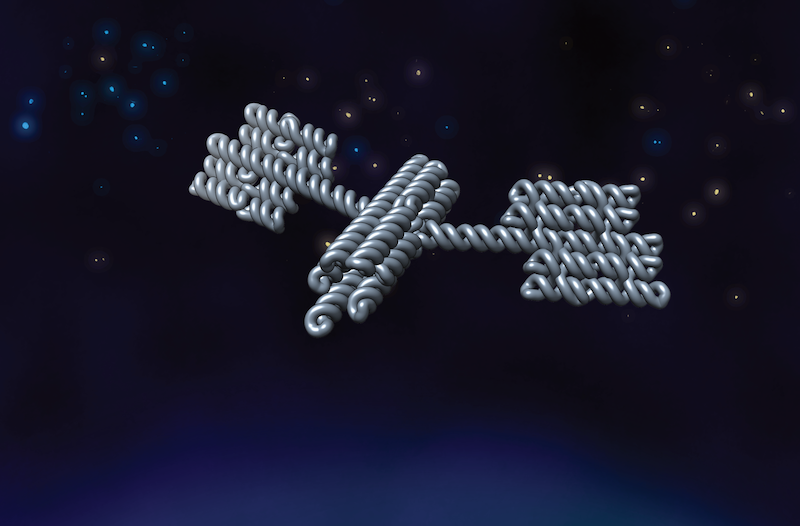RNA’s single-stranded nature makes it amenable to forming complicated structures through folding. Using RNA nanotechnology, a single-stranded architecture (named RNA origami) was developed that focuses on the design of self-assembling RNA nanostructures for applications in medicine and synthetic biology. The process makes nanostructures created by origami-like folding of nucleic acids.
Now, in a new study, researchers uncover rules and mechanisms for RNA folding that will make it possible to build more ideal and functional RNA particles for use in RNA-based medicine.
The authors noted that methods like RNA origami have been used “to design structural RNA scaffolds to deliver siRNA for gene knockdown in cells, to bind thrombin to function as an anti-coagulant, to be expressed and folded in vivo, and as protein scaffolds to regulate gene expression.” The current study, they say, provides a structural basis for improvements to the design cycle of RNA nanodevices.
This work is published in Nature Nanotechnology in the paper, “Structure, folding and flexibility of co-transcriptional RNA origami.”
The paper describes how the RNA origami technique was used to design RNA nanostructures that were characterized by cryo-electron microscopy (cryo-EM). The cryo-EM investigations provided valuable insight into the detailed structure of the RNA origamis, which allowed optimization of the design process and resulted in more ideal shapes.
“With precise feedback from cryo-EM, we now have the opportunity to fine-tune our molecular designs and construct increasingly intricate nanostructures,” explained Ebbe Sloth Andersen, PhD, associate professor at the Interdisciplinary Nanoscience Center (iNANO), Aarhus University in Denmark.

“It was quite a surprise to discover an RNA molecule that refolds this slow since folding typically takes place in less than a second,” noted Jan Skov Pedersen, PhD, professor at the department of chemistry and iNANO, Aarhus University.
”We hope to be able to exploit similar mechanisms to activate RNA therapeutics at the right time and place in the patient,” explained Ewan McRae, PhD, who is starting his own research group at the Centre for RNA Therapeutics at the Houston Methodist Research Institute in Texas.
To demonstrate the formation of complex shapes, the researchers combined RNA rectangles and cylinders to create a multi-domain “nanosatellite” shape, inspired by the Hubble Space Telescope.
“I designed the nanosatellite as a symbol of how RNA design allows us to explore folding space (possibility space of folding) and intracellular space, since the nanosatellite can be expressed in cells,” said Cody Geary, PhD, assistant professor at Aarhus University, iNANO, who originally developed the RNA-origami method.
However, the satellite proved difficult to characterize by cryo-EM due to its flexible properties, so the sample was sent to a laboratory in the United States, where they specialize in determining the 3D structure of individual particles by electron tomography—the IPET-method.
“The RNA satellite was a big challenge! But by using our IPET method, we were able to characterize the 3D shape of individual particles and thus determine the positions of the dynamic solar panels on the nanosatellite,” said Gary Ren, PhD, staff scientist, imaging and manipulation of nanostructures, at the Molecular Foundry at Lawrence Berkeley National Laboratory in California.
The investigation of RNA origami contributes to improving the rational design of RNA molecules for use in medicine and synthetic biology. A new interdisciplinary consortium, COFOLD, supported by the Novo Nordisk Foundation, will continue the investigations of RNA folding processes.




